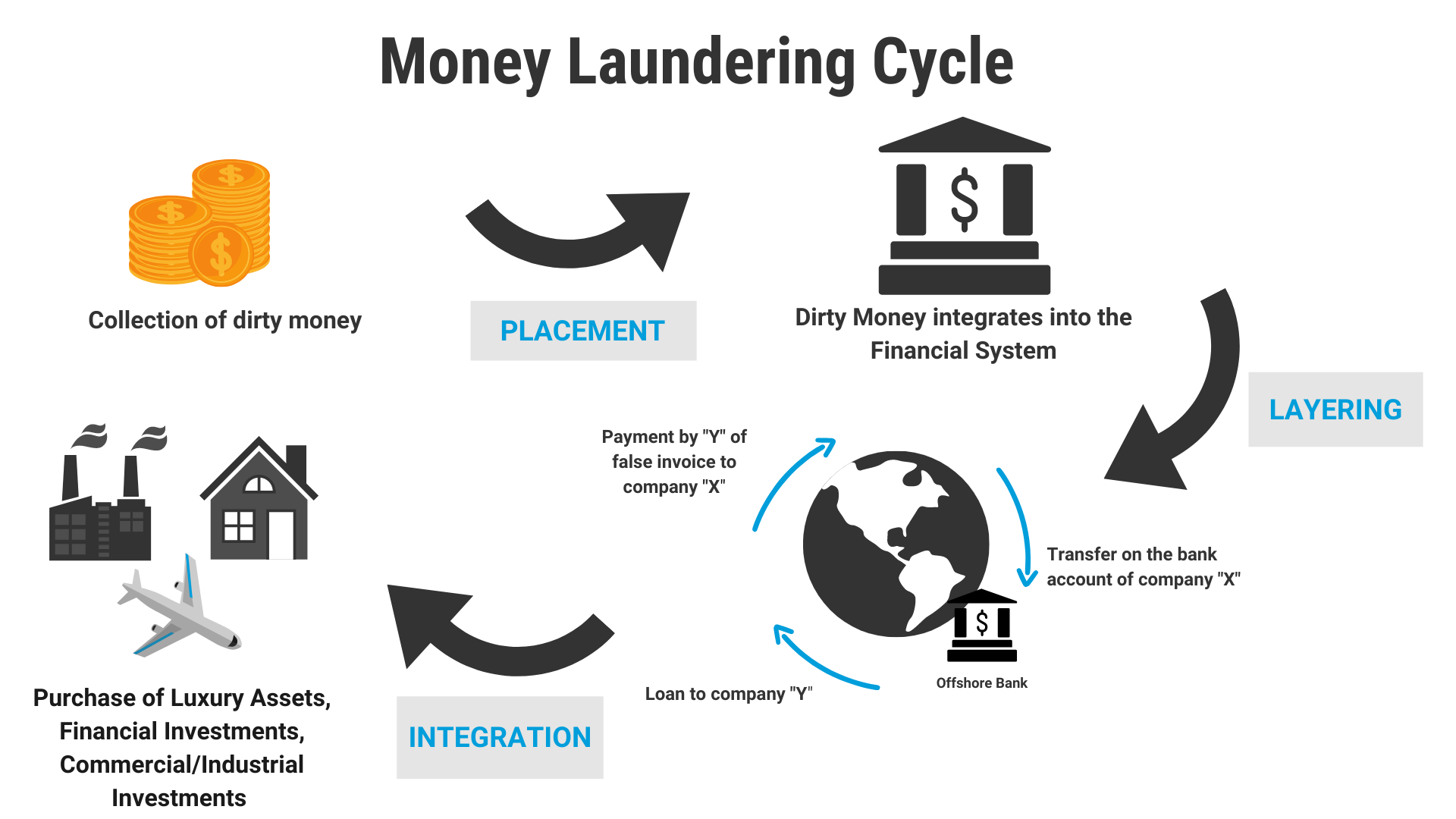Money laundering is the processing of criminal proceeds to disguise their illegal origin. This process is of critical importance, as it enables the criminal to enjoy these profits without jeopardising their source. Through the Global Programme, UNODC encourages States to develop policies to counter money-laundering and the financing of terrorism, monitors and analyses related problems and responses, raises public awareness about money-laundering and the financing of terrorism and acts as a coordinator of initiatives carried out jointly by the United Nations and other international organizations.
Money laundering has been addressed in the UN Vienna 1988 Convention Article 3.1 describing Money Laundering as:
“the conversion or transfer of property, knowing that such property is derived from any offense(s), for the purpose of concealing or disguising the illicit origin of the property or of assisting any person who is involved in such offense(s) to evade the legal consequences of his actions.”
Money laundering is a process that typically follows three stages to finally release laundered funds into the legal financial system.
3 Stages of Money Laundering:
- Placement (i.e. moving the funds from direct association with the crime)
- Layering (i.e. disguising the trail to foil pursuit)
- Integration (i.e. making the money available to the criminal from what seem to be legitimate sources)
In reality, money laundering cases may not have all three stages, some stages could be combined, or several stages repeat several times. For instance, Cash from drug sales is divided into small amounts then they are deposited by “money mules” and afterward transferred as payment for services to a shell company. In this case, the placement and layering are done in one stage.
